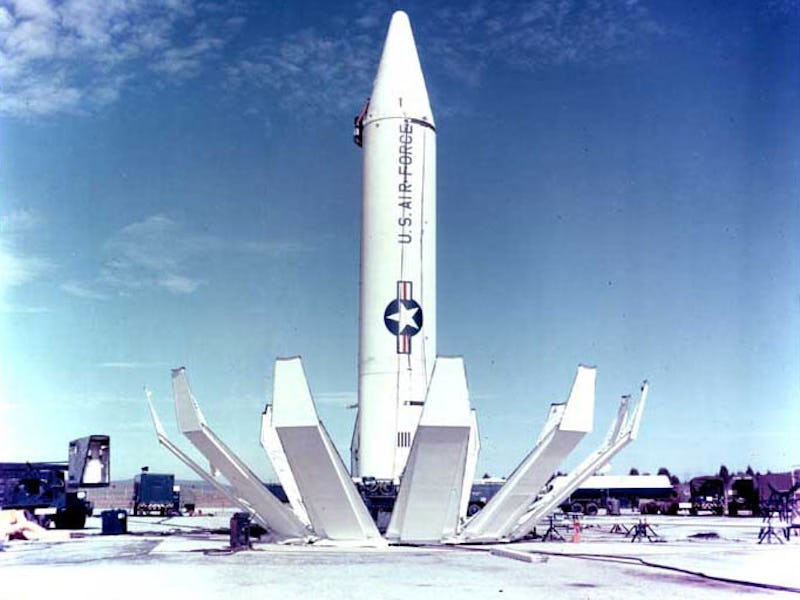Floppy Disks Control U.S. Nukes: "This System Still Works"
A military official says the system is still up to snuff.

The U.S. military is using technology developed in the 1970s and implemented during President Gerald Ford’s administration to coordinate some of the functions of our nuclear arsenal. The key, it turns out, to keeping our nuclear weapons safe, secure, and ready for use all these years has been an IBM Series/1 computer and floppy disks, according to an AFP report published this week.
While our use of early modern technology to manage our most advanced weaponry may signal to some the futility of trying to maintain weapons that can destroy the world many times over without ever encountering a tragedy or an accident, a spokeswoman for the Pentagon told the French news agency:
“This system remains in use because, in short, it still works.”
Whether the revelation, contained in a report from the Government Accountability Office, strikes you as an indictment of the digital capabilities of our Armed Forces or as a huge endorsement of floppy disks, we should be able to agree it’s worth looking into new options.
There is plenty to be said for taking slow and considerate steps toward modernizing and avoiding some of the immense risks posed by opening nuclear-sized holes in our cybersecurity, but at a certain point it begins to just get silly.
Digital technology, in particular, has grown at a (literally) exponential rate since that time, though, presumably, the functions of our nuclear arsenal have remained just about the same.
The secret to the U.S. victory in the Cold War.
Nobody thinks we should be coordinating our nuclear arsenal through The Cloud, but our continued use of the euphemistic “legacy systems” across many levels of government underlines concerns that we are operating at less than full capacity. Part of the problem, of course, is the sheer size of the Armed Forces, and the reliance on digital communications to maintain operational security means doing a system-wide maintenance poses a major challenge. As the report notes, just keeping our systems running everyday is a herculean feat, so adding in a new system was never just a matter of developing the technology.
The United States federal government spent $61.2 billion on “operations and maintenance” of computers systems in 2015 and another $19.2 billion on “development, modernization and enhancement.” Those numbers may sound like a lot until you remember the government’s annual expenditures totaled $3.8 trillion. Considering the U.S. Department of Defense is the largest single employer of people in the entire world, it’s perhaps more understandable why “legacy” systems still remain.
Switching everyone and making sure everything still works with 100 percent reliability is serious business.
And we are moving to modernity. The Pentagon has announced that it expects all these truly legacy systems to be replaced by 2020. Of course, by then, the technology agreed upon in 2016 will already be looking a little archaic. Can’t you just hear the next generation mocking: The Military still uses computers to manage its nuclear arsenal? Quantum neural processing is so much better. Actually, that’s already in the works.